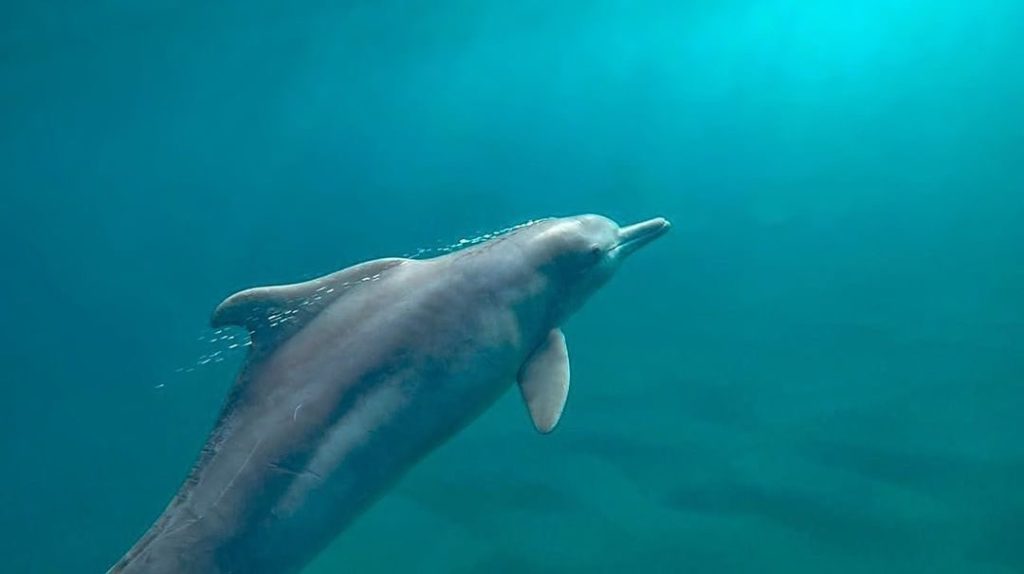The Western Cape is teeming with life and the landscape filled with an abundance of endemic fauna and flora. Our oceans are no different. There are eight marine mammals that call our coastline home. These include five types of dolphin and three different whales.
1. The Indo-Pacific bottlenose dolphin
This dashing dolphin measures between 2-4m and can be found in pods that range between 5-50 individuals, according to Table Mountain National Park. These animals can weigh between 200kgs and 480 kgs.
2. Dusky dolphin
The dusky dolphin is a beautiful grey-black ocean mammal that can grow to 1.8-2m and weigh anywhere from 70kgs to 100kgs. Their pods can have up to 100 individuals.
View this post on Instagram
3. Heaviside’s dolphin
Growing to a maximum of 1.8m, the Heaviside’s dolphin is a smaller cetacean found in the Cape. These animals have beautiful black, grey and white markings and are sometimes mistaken for baby orcas because of this. They travel in pods of up to 10 individuals and a fully grown adult weights up to 75kgs.
View this post on Instagram
4. Indian Ocean humpback dolphin
The humpback dolphin is a sight to behold. Their distinctive curved backs and small dorsal fin make them an oceanic wonder. These animals travel in small pods of 3-7 individuals. They can grow to 3m and weigh up to 280kgs. If you happen to see one, consider yourself extremely lucky as they are considered South Africa’s most endangered mammal.
View this post on Instagram
5. Long-beaked common dolphin
These intelligent cetaceans are grey-black and yellowish in colour. Their tri-coloured skin and pronounced beaks help are distinctive identifying characteristics. These dolphins measure between 2-2.5m and weighing anywhere from 80kgs to 150kgs. Their pods can grow to over 100 individuals.
View this post on Instagram
6. Byrde’s whale
Byrde’s whales are impressive giants measuring up to a maximum of 14m and weighing between 12 and 25 tons and are easily distinguished by their curved dorsal fin. These animals, according to Simon’s Town.com are rorqual whales. This means they can open their mouths very wide due to the grooves along their throat. This allows the animal to take in massive amounts of water when feeding. These whales are dark grey along their upper body with a lighter underbelly, which becomes white in their mid section.
View this post on Instagram
7. Southern right whale
Southern right whales have and interesting ‘filter’ built into their mouths. These whales have between 200-270 fine ‘plates’ in their upper jaw that hang downwards, filtering the animal’s food. This feature is what makes Southern rights baleen whales. Whale hunters called these animals and their counterparts in the northern hemisphere the ‘right’ whale, as it is rich in oil and not a very fast swimmer. Measuring between 15-17m, these giants can weigh between 20 and 40 tons.
View this post on Instagram
8. Humpback whale
Humpback whales are identified by their long white flippers, which can measure to nearly one third of the entire length of its body. The humpback whale is roundish and short, in whale standards. These animals are known as the ocean’s acrobats for their playful activity. They aren’t afraid to breach – jump out of the water completely – or lobtail – slap their tail on the water. Another of the humpback’s tricks is to ‘spy hop’ which is when the whale sticks its head out of the water. These animals are also rorqual whales. They measure between 13,1m and 13,7m and weigh between 30 to 50 tons.
View this post on Instagram
Image: Instagram/ marineprotectionproject






